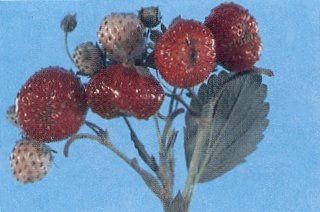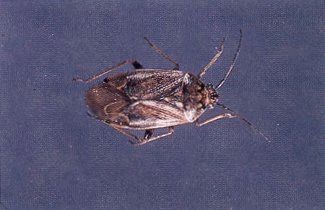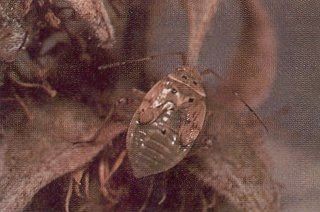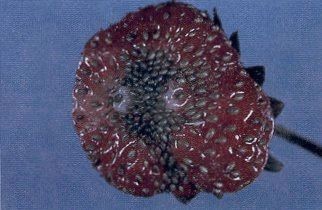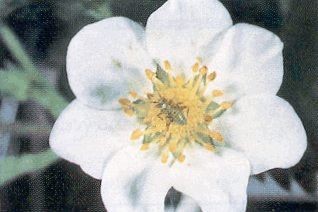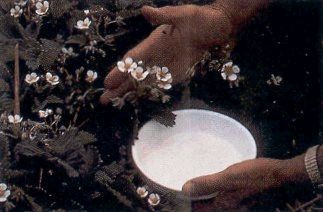1997, ISBN 1-55048-796-5
Species: Lygus lineolaris (Palisot de Beauvois)
Heteroptera: Miridae
INTRODUCTION
The tarnished plant bug (TPB) attacks 385 plant hosts, of which 130 are economically important species. A partial host list includes: alfalfa, apples, apricots, beans, beets, blackberries, carrots, celery, cherries, clover, commercially grown flowers, cotton, cucumbers, currants, lettuce, peaches, peas, pears, peppers, plums, potatoes, quince, rasberries, strawberries, tobacco, tomatoes, turnips.
TPB is the most widely distributed of all Lygus species present in North America. In Canada, TPB is found in all provinces and territories.
DAMAGE
TPB have piercing-sucking mouthparts. Nymphs and adults damage strawberry plants by feeding on the individual achenes (seeds). This prevents growth of the receptacle and deforms fruit, resulting in "cat-faced"and "button-berry" fruit (Figs. 1, 2). Deformed fruit often have a concentration of seeds at the apex (tip). TPB feeding results in hollow seeds which are often straw-brown in colour. This charateristic allows one to distinguish TPB damage from other types, such as poor pollination.
Some TPB damage occurs prior to or during bloom, however, most occurs around petal fall. Early-maturing cultivars, bearing fruit in June, tend to have less TPB damage than later-maturing ones.
LIFE HISTORY
TPB overwinter as adults under bark, leaf litter, mulch and other protected places. Adults are small oval insects and vary in colour from straw-green to dark brown, to reddish-brown with black mottling. There is a charateristic yellow-tipped triangle behind the head (Fig. 3). Adults are 5.0 to 6.0 mm long and 2.5 to 3.0 mm wide.
In late-April and May TPB adults become active and feed and lay curved eggs in the petioles and stems of weed and crop hosts. Within 10 days eggs hatch into yellowish-green nymphs 1.0 mm long (Fig. 4). These nymphs undergo 5 molts, over a 3 to 4 week period, before reaching the adult stage. Older nymphs are brown and develop wing pads (Fig. 5). In Canada, depending on locality, there are one or two overlapping generations a year. All life stages may be present at the same time.
CONTROL
TPB feed on numerous weed and crop hosts. Therefore, it is important to avoid planting strawberries near weedy areas to reduce the numbers of TPB migrating into the fields. Mowing and removing plants adjacent to strawberries also reduces TPB damage. It is important to NOT mow the weeds and plants adjacent to the strawberries during bloom as this will stimulate movement of TPB into strawberry plantings.
Many predators and paracites attack TPB but not enough information is known about the beneficial effects of these insects in strawberry plantings.
Nymph population densities can be monitored from just before the blossoms open until until harvest to determine whether ot not chemicals are needed for control. To monitor, shake flowers or fruit over a light-coloured saucer and count the number of nymphs caught (Fig. 6). Chemical treatment is recommended if an average of one to two nymphs occur per blossom cluster.
Before spraying, please consult your provincial agriculture department for recommendations on chemical use. Always read the label for mixing instructions, dosages, and precautions.

